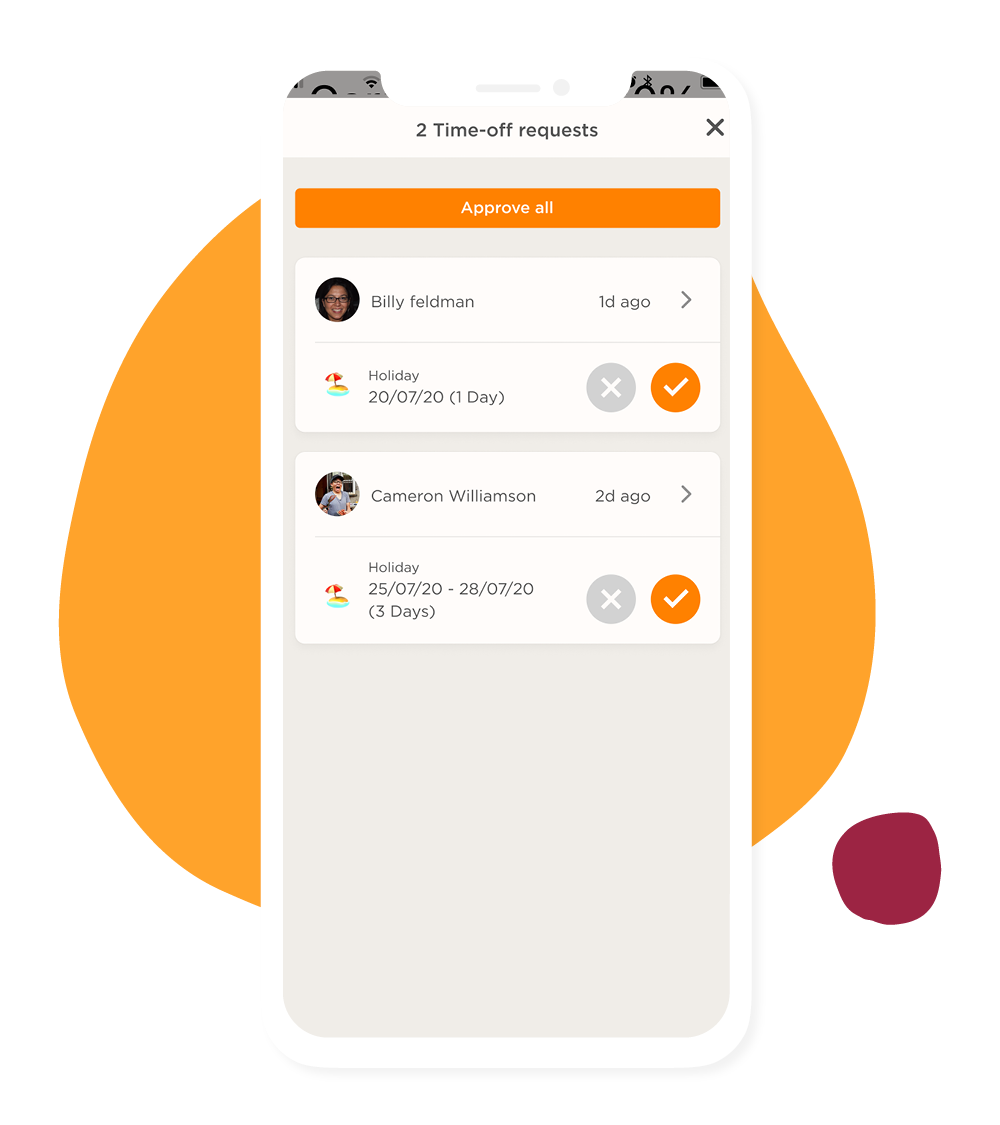The COVID-19 pandemic has inspired and forced HR leaders and their teams to think about the role of the organization’s human resources function. In early 2020, companies quickly transitioned to a remote work model. In-person teamwork shifted to online collaboration methods. The reality of working from home was uncharted territory for most employees. In spite of all these changes, even after a year, the workplace continues to evolve in response to COVID-19.
HR managers have been at the center of these pandemic-generated changes from the beginning. They had to navigate new health and safety requirements, support managers in the new normal, reduce headcount in some cases, and keep up with required administrative processes.
“Right now, HR and information technology (IT) are arguably the two departments most important to a company’s survival,” according to a technology advisor who spoke to the Society for Human Resources. “Executives want to ensure remote workers have the right technology and support at home to do the job, that their sensitive HR data is kept safe in home working environments, and that they’re keeping remote workers engaged and productive.”
As organizations and HR teams look ahead, it’s important to take stock of what’s changed and how those changes will impact the future of business and reinvent the role of HR. COVID-19 has had many negative repercussions—extreme health risks, high unemployment, business closings, and social divisiveness, but according to HR analyst Josh Bersin, HR can also find some positive outcomes.
“HR teams are inventing new ways to work, new models for jobs, new ways to learn, and new ways to pay, incent and reward people,” Bersin writes in HR Executive.
In this guide, we’ll consider six important changes and how HR can make the most of those changes in 2021.
- Reinforce new requirements for workplace health and safety
- Implement new approaches to time off
- Integrate systems for maximum efficiency
- Capitalize on technology to boost employee engagement
- Expand diversity, equity, and inclusion initiatives
- Adapt to the prevalence of remote work
The pandemic required organizational change on a grand scale. While the adjustments and trauma impacted employees and leaders alike, it benefits HR to put the key learnings to use to help the workplace evolve and transform in innovative ways.
Reinforce new requirements for workplace health and safety
HR leaders are being tasked with staying abreast of evolving health and safety guidelines and understanding the rapidly changing environment so that policies and procedures meet requirements. Employees, who are overwhelmed by a constant barrage of COVID-19 updates from the local and national news, rely more and more on their HR department as a primary source of up-to-date and accurate information about the pandemic.
Ensuring that businesses not only get the information they need to make decisions but that employees are informed about these policies will continue to be an ongoing challenge for HR teams. Companies that are planning a return to the workplace may also find many employees are hesitant or nervous about doing so. In a recent KRC research survey of American employees, almost half said they fear that they will be required to return to work before it’s safe.
Organizations are looking to HR to ensure that employee concerns around health, safety, and wellbeing are addressed in an ever-changing physical environment. Elizabeth Adefioye, Senior Vice President and CHRO of Ingredion, reports that, “Since the Covid-19 pandemic, I have been partnering with our CEO and key executives from the technology, finance, communications, and facilities departments to develop a phased, safe global approach to returning to the workplace.”
Next step: As COVID-19 vaccines continue to roll-out, benefits providers, medical professionals, local officials, and HR are all at the forefront of the conversation. HR can provide factual information about the vaccines to employees and share documentation from medical experts and organizations. It is also important that HR works with leadership to establish any associated policies about returning to work, workplace vaccine requirements, and other health-related policies. Be sure to clearly communicate these policies well in advance to give employees ample time to prepare and adhere to new policies.

Implement new approaches to time off
Complying with federal and local government leave guidelines became a top priority for HR during the pandemic. Organizations either revised existing time and attendance policies or made temporary adjustments to meet requirements.
For some, that experience highlighted the need for more flexible policies. It is up to HR to carefully consider what changes will be made, the timing for implementation, and how to best communicate it to the workforce.
Adam Kemper, an attorney with Greenspoon Marder in Ft. Lauderdale, Florida. advises that “Employers should be prepared to have a [time off] plan in place for 2021 that contemplates COVID-19-related leave scenarios and be prepared to comply with applicable state and federal leave laws.”
In addition, due to limited travel during the pandemic, some HR departments may be faced with the challenge of a workforce that is overdue for time off. HR Executive reports that a recent survey showed that 47% of employees said they have gone a full calendar year without taking any paid time off (PTO). Of those surveyed, 38% stated they were hesitant to request PTO during COVID-19.
Next step: To avoid burnout and a decrease in engagement, HR can help encourage employees to use their well-earned time off by working with management to confirm there is sufficient coverage, implementing additional paid holidays, or providing employees who have not yet accrued time off the option of borrowing PTO in advance.

Integrate systems for maximum efficiency
In response to the pandemic, organizations are recognizing the importance of investing in new technology. More than two-thirds of IT leaders said they expect to spend more on automation over the coming year. Linda Mougalian, a senior division vice president with Roseland, New Jersey-based ADP, states that “Organizations see these technology investments as yet another way to help advance out of the economic downturn by creating new efficiencies or improving workforce productivity.”
However, sufficient training is needed to reach full user adoption. The widespread use of teleconferencing, self-service HCM, and biometric technology access control products means that many employees now have to work in ways they hadn’t previously. HR can help by providing an integrated place to learn, acquire new skills and competencies, and interact with their coworkers. In addition, having tools in one place enables organizations to easily analyze data and facilitates future planning.
Next step: To ensure that ongoing system integrations are efficient and secure, HR needs to continue working closely with their IT counterparts. Selecting and implementing new platforms and workflows should be a collaborative effort. Work to build relationships in advance of a crisis or before you’re in dire need of new technology. This relational approach will help HR and IT understand each others’ needs and ensure sensitive data is safe, secure, and accessible in the most efficient manner.

Capitalize on technology to boost engagement
With the usual in-person communication opportunities no longer possible, HR teams have had to develop alternate methods for employees to connect with each other and the organization, regardless of their physical locations. While conducting surveys has long been a common HR practice to gather feedback, measuring employee sentiment and collecting input in times of change is more important than ever. When faced with a mostly remote workforce, HR must gather and interpret employee feedback and make recommended changes accordingly.
Fortunately, leveraging technology such as HRM systems enables HR to easily administer surveys and provide opportunities for employees to connect in community chat rooms. During COVID-19, many companies have seen a positive impact on engagement. In a Gallup survey conducted in July, employee engagement levels had reached an all-time high of 40%.
In addition to increased communication, the pandemic has created the need for more frequent, and more engaging online learning opportunities. From health and safety protocols to onboarding new employees, HR has had to level up their content and rethink how training is delivered. More and more companies realize a robust learning management system (LMS) that can deliver engaging training content, track progress, and ensure compliance is now a must-have tool.
Next step: In the years ahead, using technology to engage employees will be the expectation, not the exception. Management needs access to tools and resources in order to lead distributed teams. From remote communication and collaboration platforms to performance tracking software, HR has a crucial role in ensuring that there are tools in place and that leaders receive the necessary training to manage remote workers effectively.
Expand diversity, equity, and inclusion initiatives
As events around the world demonstrated increased racial tension. Diversity, equity, and inclusion (DE&I) became a top priority in 2020. Consumers, customers, and employees all expect more from organizations related to DE&I. HR has important responsibilities to foster or enhance an environment that supports, reinforces, and prioritizes DE&I—even while managing a remote or hybrid workforce.
“What [HR] leaders are seeing in this unique moment is that the barriers to change, and to the leaders’ readiness and willingness to engage that have always been there, have softened or even just dropped completely. And, in fact, heads of DE&I, who used to be pushing for change, are now receiving so many inbound requests for plans and actions to do so now,” according to Lauren Romansky, Managing Vice President of the Gartner Human Resource practice.
As you consider where to focus your DE&I efforts, we recommend a few key actions:
- Hire remotely: Remote hiring helps recruit employees from a variety of backgrounds, cultures, and geographical locations.
- Educate: Offer training to educate employees about constructive dialogue and disagreement and how DE&I impacts organizational growth and innovation.
- Build employee-manager relationships: Support managers in learning how to respectfully communicate in a way that opens up dialogue and builds trust among diverse teams.
- Nurture employees’ strengths: Establish expectations that employees’ strengths and differences are honored and considered an asset to the organization.
- Create and reinforce diversity policies, guidelines, and expectations: Make sure your code of conduct includes specific guidelines and requirements around your commitment to a culture of trust, respect, and belonging for all employees.
Next step: Find ways to reinforce that all employees are welcome. Demonstrate how they are invited to contribute their ideas and what it means to respect colleagues with differing points of view or experiences. DE&I is not just about numbers; however, for true progress to take place, HR needs to establish, monitor, and review performance metrics to determine what impact the changes being made are having.

Adapt to the prevalence of remote work
Underneath all of these changes is the seismic shift: remote work. Before the pandemic, many organizations were still reluctant to fully embrace a remote work model. But when offices and worksites around the globe closed in record numbers, the need to work from home became an instant reality.
“In most cases, this forced experiment around remote working as a result of COVID-19 has shattered perceptions to prove that most employees can actually be trusted to get their work done from home,” Lauren Mason, a principal and senior consultant at Mercer, told SHRM.
Many organizations (Amazon, Google, Microsoft) adapted and extended their initial work-from-home plans late into 2021. Others, like real estate firm Zillow, have made remote work an ongoing option. About 90 percent of Zillow’s 5,400-person workforce now have the flexibility to work from home rather than an office, reports SHRM.
Next step: As you think about remote and hybrid work for the future, keep ease of access, security, and the overall impact on your talent strategy in mind. There are great opportunities to maximize the value of remote work—such as a larger talent pool and cost reductions for space. But, be aware that you need a specific remote strategy to help you navigate the layers of decisions that can make this a long-term success.

Recommended For Further Reading
Conclusion
The pandemic demonstrated that a seat at the table for HR is required, and well-deserved, after adapting and leading in this crisis. How an organization’s HR department continues to adapt and respond may very well determine organizational survival. The idea of the “future of work” has been around for several years. It now feels like that catchphrase has come to fruition.
“While 2020 was the most volatile year in modern history, we would be mistaken to think that the disruption is over,” according to Brian Kropp in HBR. “Rather, as we move into 2021 and beyond, the rate of disruption will potentially accelerate as the implications from 2020 play out across the next several years.”
This is the era for HR to build upon what they’ve learned and deliver people-centered strategies that reinvent workplace safety, time off, systems, engagement, and DE&I. The skill with which HR faced unprecedented challenges in 2020 demonstrates that they are more ready than ever to lead their organizations into people policies and practices that transform the world of work.
Meet Bob
Bob is designed and developed for the new world of work. Onsite, hybrid, and remote HR leaders can drive culture, two-way communication, engagement, performance, and compensation.
bob’s innovative UI, automated processes, and integrations with leading third-party tools ease administrative tasks for everyone across the organization and make even the most mundane work tasks pleasant, intuitive and engaging—and not just for HR admins. Bob puts people first with culture tools that connect co-located and remote employees to their fast-growing, global companies.
